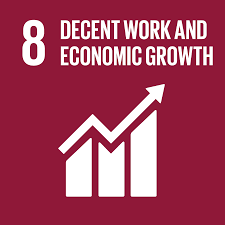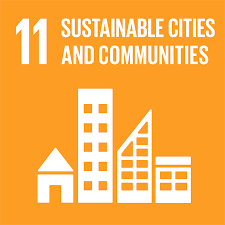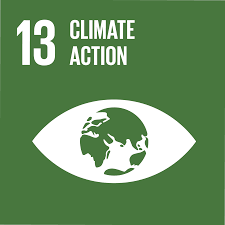Empowering Women through Financial Advocacy
- Sandeepa

- Sep 5, 2020
- 4 min read
This article is focused on the following UN Sustainable Development Goals:
Throughout the past few years, women have been on the frontlines of grassroots action and climate change mitigation. Several studies have proven that women are more aware of the harmful effects of climate change on our environment, specifically low-income communities. Furthermore, women are training to implement sustainable practices in their workplaces; whether it is their farms, the markets, or their homes. One of the biggest ways women have been able to contribute to their country’s economy, participate in sustainable development, and aid in the mitigation of climate change is through micro-financing.

You may ask: what is micro-financing?
Micro-financing is defined as a provision of financial services that's available to low-income people. This type of loan helps aspiring entrepreneurs generate income, build assets, manage risks and meet their household needs.
As more states are recognising the importance of women’s participation in governance to ensure sustainable development, local and national organisations have taken steps to make sure that women participate in decision making processes. Several women, especially in low-income states, tend to only be involved in the agricultural sector, directly working towards earning for themselves and their families. However, wages for these women do become a concern when managers treat them unfairly or when producers aren’t earning enough revenue to cover wages for women. This is where micro-financing comes into play.
In many local communities, women contribute a small portion of their income towards a pool of money which is dedicated to the community of women. By doing this, women get the opportunity to engage themselves in sustainable practices and projects within their communities. These women can then hold meetings at a time of their choosing to grant one of the women a loan that supports their practice. This could simply help them replace an item in their household that will increase their efficiency in cooking or it could be towards a personal project. Overall, this initiative enables women to directly manage their finances for themselves and their families while implementing sustainable practices in their communities.
A great example of a society of women who are involved in micro-financing practices is Osukuru United Women which is led by a local volunteer named Constance Okollet. In the beginning of this initiative, Okollet started pooling money, and eventually met with the women in her community to give a small loan to 5. Soon enough, this network expanded and today, they are a network of 40 women-led associations and nearly 1,300 members who have pooled more than 2.8 million dollars while empowering more than 250,000 women who are today economically independent.
“Women have been empowered with measures that are building their resilience to the effects of climate change. For example, as a direct result of this initiative: 218,294 women now have access to clean water; 253,644 women farmers earn an income from value-chain agricultural production and marketing; 198,640 women were able to improve their families’ nutrition; 1,835 women use solar energy; and 135 women’s groups harness honey from bee-hives, earning an income of USD 540,000 from honey sales annually.” - UNFCCC
Women working in low-income communities face discrimination towards their wages and sometimes, they don’t even get paid for the work they do! Through micro-financing, all women can learn how to take care of their finances and by doing so, they ensure their families are safe and healthy. In connection to Goal 8: Decent work and economic growth, we are able to not only teach women how to financially support themselves but we also ensure that they are self-employed. Through any micro-financing initiative, we can empower local women to take up sustainable practices and be catalysts in their own communities.
By supporting women and educating them about financial sustainability, we can build sustainable communities within low-income countries. With reference to Goal 11: Sustainable cities and communities, women are a key component to society. They understand that the environment is a hemisphere that shapes and breaks sustainability, especially in the midst of globalisation today. With urban areas gaining more economic facilitation, rural communities require leaders who are innovative and sustainable. This is why micro-financing one way to ensure low-income communities are met with just as many opportunities as middle or first class communities. We are able to build a more resilient and affordable future for low-income communities with the plus of implementing sustainable practices and policies.
Sustainability is a key factor to Climate action, Goal 13. With a majority of women living in low-income states, sustainability is a crucial part of their everyday lives because they are at the forefront of agriculture. They leave family responsibilities to ensure that they earn enough money through farming hence, they understand the importance of protecting our environment. Through micro-financing, they can upgrade their present practices to climate-smart practices in order to ensure that what they are doing isn’t harming the environment but is, in fact, protecting it.
Empowering women to become small-scale entrepreneurs in low-income communities is a step towards a more sustainable future because they best understand the environment we live in. Through micro-financing, we can ensure women balance the working gender gap, initiate sustainable projects and practices, and become catalysts in grassroots action. Remember, change starts with you.
External Resources
Check out some interesting microfinance initiatives here.
Take a look at how microfinancing has helped women in Uganda here.
Check out Viola Llewellyn’s TED Talk on Micro Financing for Africa here.
Check out Ethan Wagner’s TED Talk on Rethinking Microfinancing here.
Works Cited
D'Angelo, Matt. “What Is Microfinancing?” Business News Daily, Businessnewsdaily.com, 23 Jan. 2020, www.businessnewsdaily.com/4286-microfinance.html#:~:text=Microfinancing is defined as a,and meets their household needs.
“Goal 11: Sustainable Cities and Communities.” UNDP, www.undp.org/content/undp/en/home/sustainable-development-goals/goal-11-sustainable-cities-and-communities.html.
“Goal 13: Climate Action.” UNDP, www.undp.org/content/undp/en/home/sustainable-development-goals/goal-13-climate-action.html.
“Goal 8: Decent Work and Economic Growth.” UNDP, www.undp.org/content/undp/en/home/sustainable-development-goals/goal-8-decent-work-and-economic-growth.html.
“Women's Empowerment for Resilient and Adaptation against Climate Change | Uganda.”
UNFCCC, United Nations Framework Convention on Climate Change, 2019, unfccc.int/climate-action/momentum-for-change/women-for-results/womens-empowerment-for-resilience-and-adaptation-against-climate-change.







Comments